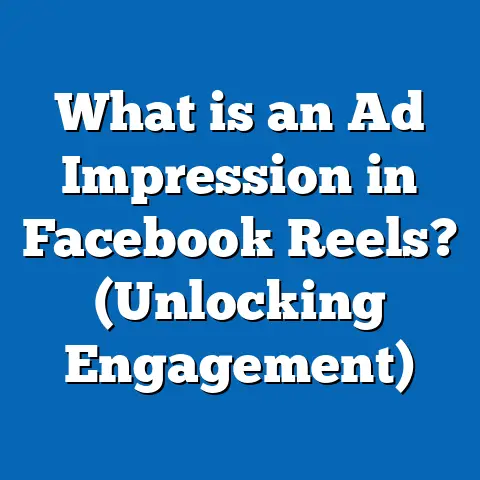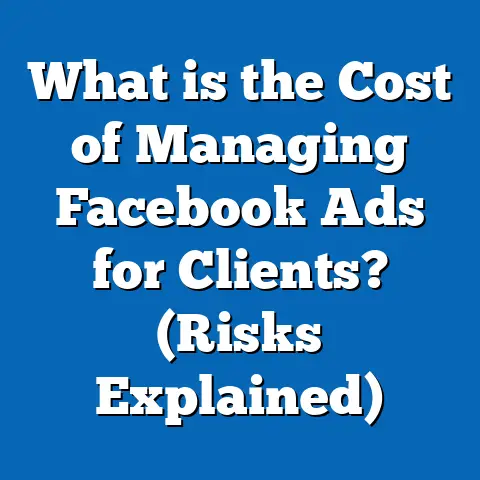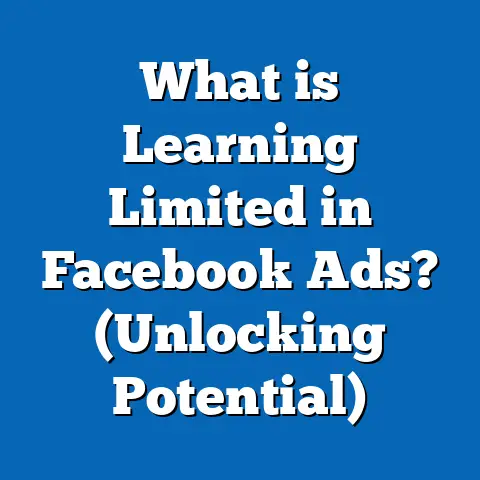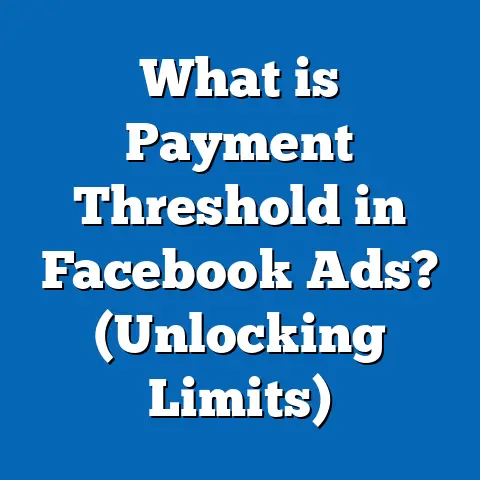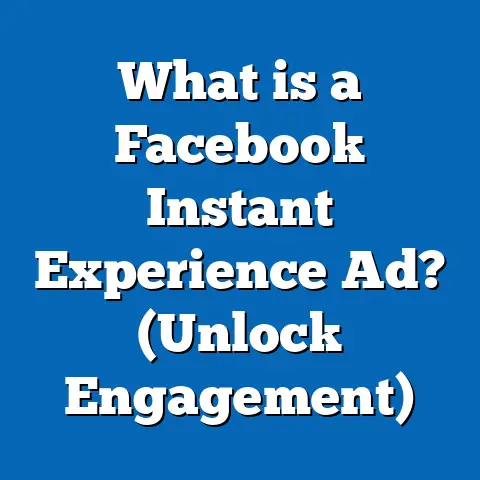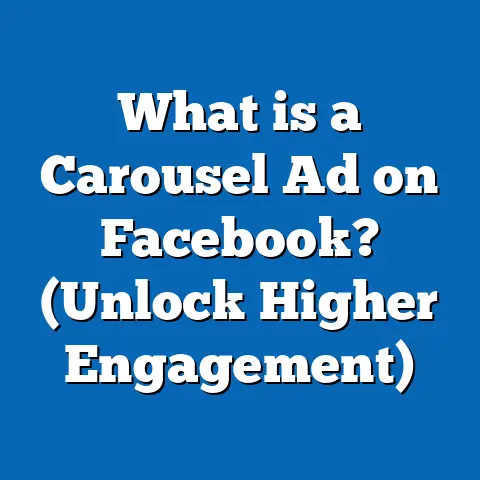What is a Facebook Ad Variable? (Unlocking Targeting Secrets)
What is a Facebook Ad Variable? (Unlocking Targeting Secrets)
Introduction: The Common Mistake That Limits Your Facebook Ad Success
Many marketers and business owners jump into Facebook advertising thinking that simply running ads will guarantee success. They often create one ad, target a broad audience, and hope for the best outcome. This approach is a costly mistake. Without understanding the power of Facebook ad variables, these advertisers waste significant budget on campaigns that underperform or fail completely.
Facebook ad variables are the factors within your campaign that can be changed or tested to improve performance. These variables control how your ad looks, who sees it, when, and where. Ignoring these variables means missing out on the ability to fine-tune your campaigns for maximum effectiveness.
This guide will demystify Facebook ad variables, present data-backed insights, and provide practical strategies to improve your advertising results by unlocking the targeting secrets hidden within these variables.
Understanding Facebook Ad Variables: The Basics
What Is a Facebook Ad Variable?
A Facebook ad variable is any element within your ad campaign that can be adjusted or tested to influence the outcome of your ads. These variables span multiple aspects of your campaign and include:
- Audience targeting: Age, gender, location, interests, behaviors
- Creative elements: Images, videos, headlines, body copy
- Ad formats: Carousel, single image, video ads, collection ads
- Placements: Facebook News Feed, Instagram Stories, Messenger, Audience Network
- Budget and bidding: Daily vs lifetime budgets, bid caps
- Campaign objectives: Awareness, engagement, conversions
- Call-to-action buttons: Shop Now, Learn More, Sign Up
Every variable can change the way your audience reacts to your ad. Effective advertisers systematically test and optimize these variables for better results.
Why Are Facebook Ad Variables Important?
Facebook’s advertising platform is highly competitive. According to Facebook’s internal data, advertisers who engage in frequent testing and optimization using ad variables achieve up to 30%-50% better performance on metrics like click-through rate (CTR), conversion rate, and cost per acquisition (CPA).
Without optimizing these variables:
- Your ads may show to irrelevant audiences.
- You could pay more for fewer conversions.
- Your creative might not engage users effectively.
- Your budget may be wasted on ineffective placements.
Optimizing ad variables is the difference between guessing and knowing what works.
Breaking Down Key Facebook Ad Variables
1. Audience Targeting Variables
Audience targeting is arguably the most powerful variable you can control on Facebook. The platform’s vast pool of user data enables highly specific targeting options.
Demographic Targeting
Demographics include:
- Age: Choose specific age ranges that best fit your customer profile.
- Gender: Advertise to men, women, or both.
- Location: Target by country, state/province, city, or even postal code.
- Language: Useful for multilingual markets.
These variables allow you to reach people who match your ideal customer profile.
Interest-Based Targeting
Facebook tracks user interests based on their activity:
- Pages they like
- Groups they join
- Events they attend
Examples of interest targeting:
- Fitness enthusiasts
- Technology lovers
- Foodies
This type of targeting helps reach people likely interested in your product category.
Behavioral Targeting
Behaviors are actions users take online or offline that Facebook can track:
- Purchase behavior (online shopping habits)
- Device usage (iPhone vs Android)
- Travel behaviors (frequent travelers)
Custom Audiences
Custom Audiences let you reconnect with people who already know your brand:
- Website visitors via Facebook Pixel
- App users through SDK integration
- Customer email lists
This retargeting variable is crucial for nurturing leads and increasing conversions.
Lookalike Audiences
Lookalike Audiences use machine learning to find new users similar to your best customers. This variable expands reach with a high probability of interest in your product.
Data Insight: Wordstream’s 2023 analysis found Lookalike Audiences boost CTR by 56% compared to interest-based targeting alone.
2. Creative Variables
Your ad creative is what users see and interact with. It strongly influences engagement.
Image vs Video Ads
Facebook supports various creative formats:
- Images: Simple and low-cost but may have lower engagement.
- Videos: More engaging; Facebook reports video ads increase conversions by up to 30%.
Video ads allow storytelling and deeper brand connection but require more production effort.
Headlines and Copy
Clear, concise headlines perform best. Personalizing copy to speak directly to your audience improves relevance.
Tips:
- Use numbers or statistics in headlines.
- Highlight benefits rather than features.
- Include emotional triggers where appropriate.
Call-to-Actions (CTAs)
CTAs prompt users to take action. Choosing the right CTA is critical:
- Shop Now
- Learn More
- Sign Up
- Contact Us
The effectiveness of CTAs varies by campaign goal.
Ad Format Choices
Facebook offers multiple ad formats:
- Single image ads
- Video ads
- Carousel ads (multiple images/videos)
- Collection ads (product catalogs)
Each format suits different marketing objectives.
3. Placement Variables
Where your ads appear influences visibility and cost.
Available Placements
- Facebook News Feed: High visibility; main feed on desktop and mobile.
- Instagram Feed & Stories: Younger audience; visually focused.
- Messenger: Direct communication; high engagement potential.
- Audience Network: Extends reach to third-party apps and websites.
Placement choice affects user interaction and cost per click (CPC).
Research: Social Media Examiner’s 2024 report showed Instagram Stories ads have 40% higher engagement but 20% higher CPC compared to Facebook Feed ads.
4. Budget and Bidding Variables
How you allocate budget and bid impacts how often your ads are shown and at what cost.
Budget Types
- Daily Budget: Spending limit per day; good for consistent pacing.
- Lifetime Budget: Total spend over campaign duration; flexible pacing.
Bidding Strategies
- Lowest Cost: Facebook optimizes for lowest cost per result automatically.
- Cost Cap: Sets the maximum cost per desired action to control expenses.
- Bid Cap: Manually sets maximum bid for ad auctions.
Choosing the right bidding strategy depends on your goals and competition level.
How to Use Facebook Ad Variables Effectively: Practical Steps
Step 1: Define Clear Campaign Objectives
Your goals dictate which variables are most important. Common objectives include:
- Brand awareness
- Website traffic
- Lead generation
- Sales conversions
- App installs
Knowing your objective helps focus testing efforts on relevant variables.
Step 2: Conduct A/B Testing (Split Testing)
A/B testing involves running two versions of an ad that differ by only one variable. This isolates the impact of that variable on performance.
Examples of variable tests:
| Variable Tested | Description | Example |
|---|---|---|
| Audience | Test different age ranges or interests | Women 25–34 vs Men 25–34 |
| Creative | Test image vs video | Static photo vs product demo video |
| Headline | Test different headlines | “Save 20%” vs “Get Free Shipping” |
| CTA | Test different call-to-action buttons | Shop Now vs Learn More |
| Placement | Test Facebook Feed vs Instagram Stories | Single placement per ad set |
Testing one variable at a time ensures clean data on what works best.
Case Study: A SaaS company increased conversions by 25% after testing three headline variants while keeping other variables constant.
Step 3: Analyze Data and Optimize Campaigns
Use Facebook Ads Manager analytics to monitor key metrics:
| Metric | What It Measures | Why It Matters |
|---|---|---|
| Click-through Rate (CTR) | Percentage clicking the ad | Indicates ad relevance |
| Cost per Click (CPC) | Cost for each click | Measures efficiency |
| Conversion Rate | Percentage completing action | Shows effectiveness of funnel |
| Return on Ad Spend (ROAS) | Revenue generated per dollar spent | Shows campaign profitability |
Pause or adjust underperforming variables based on data insights.
Step 4: Scale Successful Variants
Once a winning combination is identified:
- Increase budget gradually to maintain performance.
- Expand audience targeting carefully.
Avoid sudden large budget increases which can disrupt Facebook’s learning phase.
Advanced Insights: Leveraging Dynamic Variables and Automation
Dynamic Creative Ads
Dynamic Creative Ads enable automatic testing by mixing multiple headlines, descriptions, images, and videos into different combinations tailored to individual users.
This approach saves time on manual A/B testing and improves personalization at scale.
Facebook reports brands using Dynamic Creative saw up to a 35% boost in conversions.
Using Machine Learning for Variable Optimization
Facebook uses machine learning algorithms that adapt ad delivery based on real-time performance data of different variables.
Advertisers should provide enough variety in variables for the algorithm to optimize effectively but avoid extreme variability that clouds results.
Comparing Facebook Ad Variables With Other Platforms
| Platform | Targeting Options | Creative Flexibility | Automation Features |
|---|---|---|---|
| Granular demographic, interest & behavior targeting | Multiple formats: image, video, carousel | Dynamic Creatives, Automated Bidding | |
| Google Ads | Keyword & audience targeting | Search & display ads mostly text/image | Smart Bidding & automated rules |
| LinkedIn Ads | Professional demographics & job titles | Image & video ads | Automated bidding |
| TikTok Ads | Interest & behavior-based | Video-focused | Emerging AI optimization |
Facebook remains the leader in combining detailed targeting with diverse creative options and automation tools.
In-depth Case Studies: Real-world Examples of Effective Variable Use
Case Study 1: E-commerce Brand Boosts Sales by 40%
An e-commerce brand selling fitness apparel used A/B testing on these variables:
- Audience: Lookalike vs interest-based targeting
- Creative: Video demos vs static images
- CTA button variations
Results:
- Video creatives combined with Lookalike audiences cut CPA by 30%.
- Engagement increased by 50%, leading to a 40% sales lift in three months.
Case Study 2: Local Service Business Improves Lead Quality
A plumbing service company targeted homeowners aged 30–60 with two CTAs tested:
- “Book Now”
- “Get Quote”
Findings:
“Get Quote” outperformed “Book Now” by generating higher quality leads with a 22% better conversion rate from lead form submissions.
Case Study 3: SaaS Company Increases Free Trial Sign-ups by 33%
They tested headline variations focusing on pain points versus benefits. The benefit-focused headline increased sign-ups by one-third while reducing CPC by 15%.
Common Pitfalls When Managing Facebook Ad Variables
- Testing too many variables at once: Makes it difficult to identify which change caused performance shifts.
- Ignoring Facebook’s learning phase: Major changes reset learning; optimize gradually.
- Using overly broad audiences: Leads to wasted spend; narrow targeting improves efficiency.
- Neglecting mobile optimization: Most users access Facebook via mobile; creatives must be mobile-friendly.
- Failing to refresh creatives regularly: Ad fatigue lowers engagement over time; rotate creatives regularly.
How Industry Trends Are Shaping Facebook Ad Variables
Increased Privacy Regulations Impact on Targeting
With Apple’s iOS updates restricting tracking and Facebook’s evolving privacy policies, advertisers face challenges in custom audience creation and tracking conversions accurately.
Marketers must:
- Use aggregated event measurement tools.
- Focus more on contextual targeting variables.
Rise of AI in Creative Optimization
AI-powered tools now suggest creatives based on audience data patterns. This trend will make creative variable testing faster and more efficient.
Tools & Resources for Managing Facebook Ad Variables
- Facebook Ads Manager: Primary tool for creating, managing, and analyzing campaigns.
- Facebook Creative Hub: Preview multiple creative formats before launch.
- Google Analytics: Track website conversions linked to ad campaigns.
- AdEspresso by Hootsuite: Simplifies A/B testing across multiple variables.
- Canva & Adobe Spark: For quick creation of visuals in different formats for testing.
- Power Editor: For advanced campaign setups involving large-scale variable testing.
Summary: Key Takeaways for Marketing Professionals and Business Owners
- Facebook ad variables are crucial levers that control campaign success.
- Systematic testing of audience, creative, placement, budget, and bidding variables improves ROI drastically.
- Use data-backed insights from Facebook reports and third-party research to guide optimizations.
- Leverage dynamic creative ads and machine learning but maintain control through structured testing.
- Stay informed about platform updates and privacy changes affecting targeting capabilities.
- Avoid common pitfalls like over-testing without structure or ignoring mobile user experience.
By mastering these variables with strategic planning and execution, marketers can unlock powerful targeting secrets that elevate their Facebook advertising campaigns from average to outstanding.
If you want, I can prepare additional content such as a step-by-step checklist for running variable tests or templates for organizing your split tests efficiently. Just let me know!

